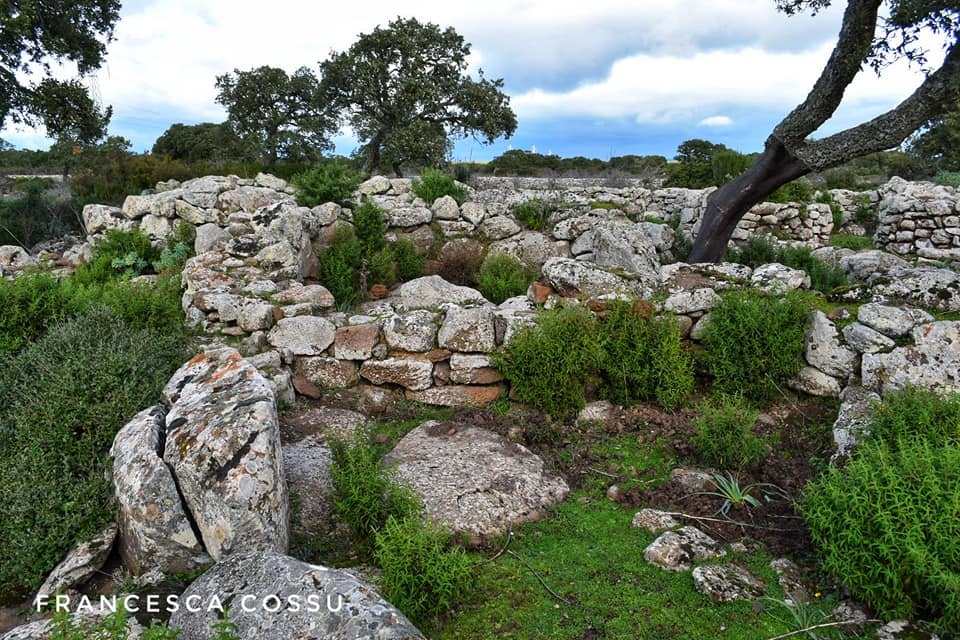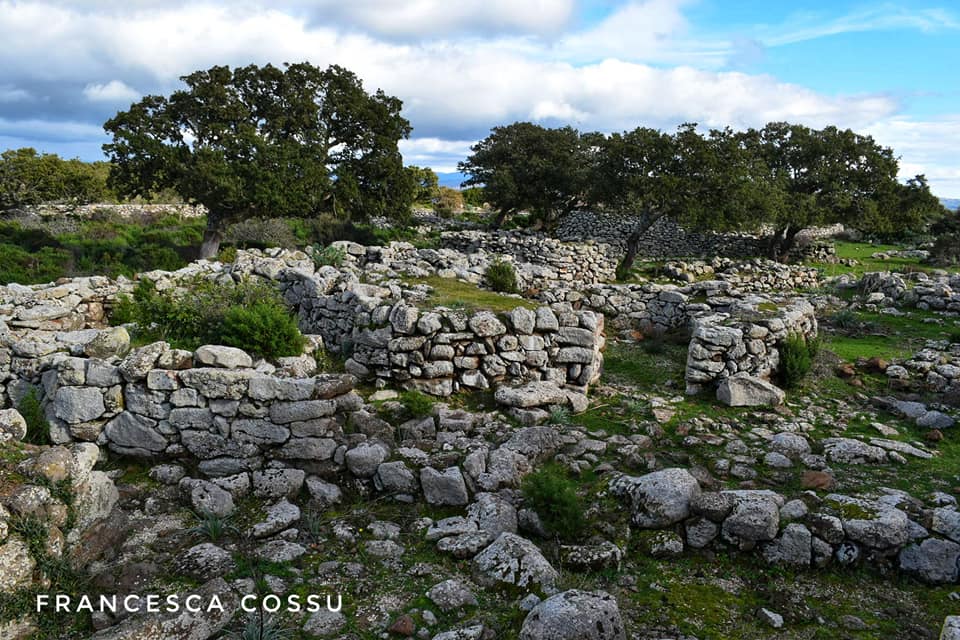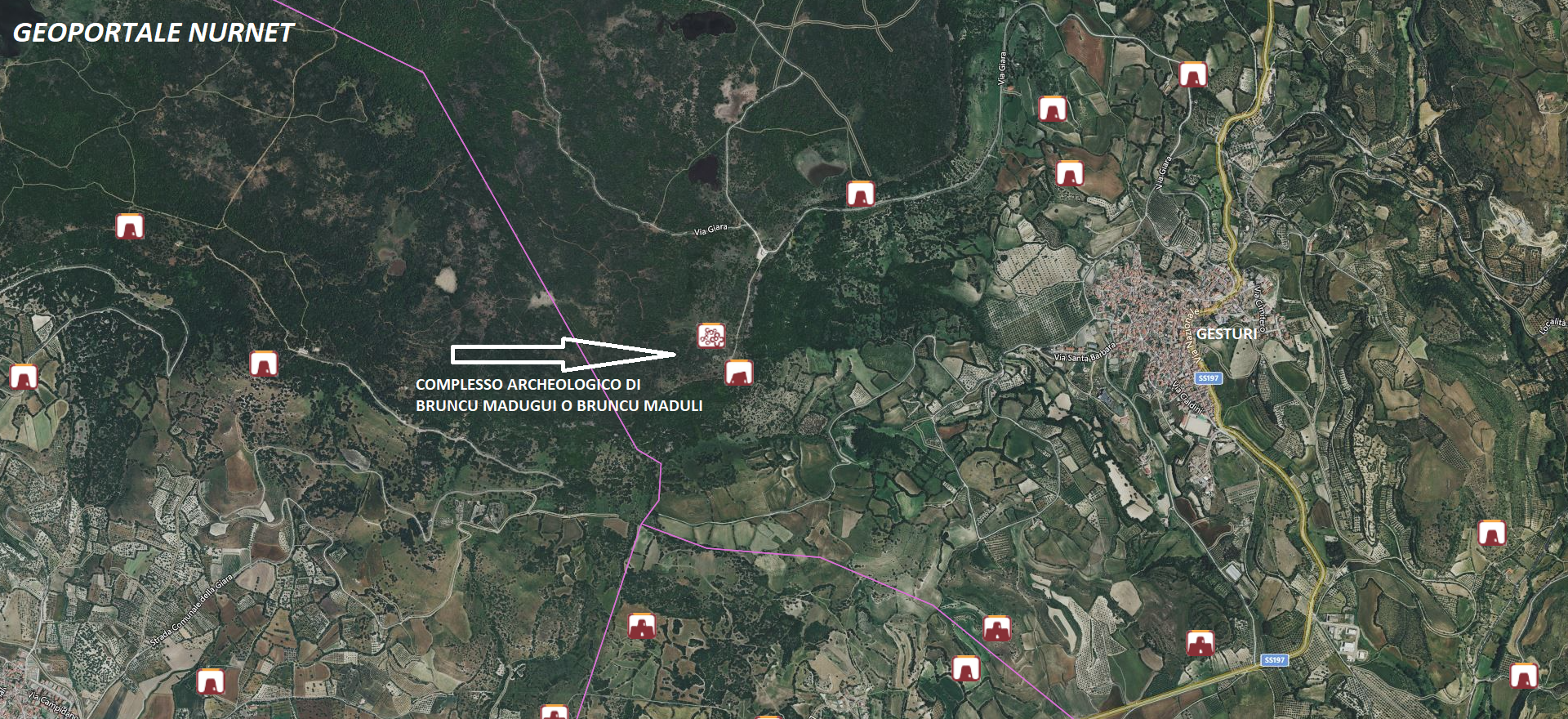19b: The archaeological complex of Bruncu Madugui or Bruncu Maduli (Gesturi) “overlooks dramatically the S/E edge of the Giara, a basalt plateau on the border between the regions of Marmilla, Sarcidano, and Arborea. The main building is of considerable architectural importance, as it falls into the category of protonuraghi or “corridor” nuraghi.
It is a powerful construction made of cyclopean work using irregular blocks of basalt. It has an irregular, almost kidney-shaped plan and is preserved at a height of about 4.50 m. The entrance faces S-S/E and leads into a staircase, on the right of which there is a niche. The staircase, covered with projecting rows, then extends into a corridor that, rising, provides access to two rooms with a curvilinear plan: one on the left, the other further back on the right; to the E-N/E of the latter, there is a section of a corridor in line with the first, which presumably originally led, at a lower level, to a second entrance of the building on the N/E side. On the left side of the corridor, an opening penetrates into the masonry, probably the beginning of the staircase leading to the terrace.
The building, difficult to read, was long dated to the Copper Age and the Early Bronze Age due to the presence of decorated ceramics attributed to the Monte Claro culture and the C14 dating of some organic finds found inside a room (1820 B.C., with a fluctuation of 250 years). More recent studies propose a dating to the Middle Bronze Age (15th-14th century B.C.) and provide a new architectural interpretation of the building: in particular, the two main environments would not be huts with visible thatched roofs on the terrace, as hypothesized by Lilliu, but internal rooms with vaulted ceilings featuring truncated ogive sections.
About 100 m to the west of the nuraghe lies a village of huts… which have yielded materials from the Final Bronze Age (13th-10th century B.C.).” (Sardegna Cultura)
The photos of the archaeological complex of Bruncu Madugui or Bruncu Maduli, in Gesturi, are by Bibi Pinna, Francesca Cossu, and Maurizio Cossu.










